The exceptional softness and ageless appeal of pashmina, a craft synonymous with luxury and elegance. Thus, have allowed it to become a part of the fashion passage. The exquisite Cashmere wool comes from the undercoat of Himalayan mountain goats, specifically the Changthangi breed. Also, prized for centuries for its extraordinary warmth and delicate texture. It originates from high-altitude parts of the Himalayas. Fashionistas and royalty alike wear Pashmina, a highly sought-after material in the industry. Because of their insulating qualities and lightweight design.
In terms of style, pashminas are timeless and represent elegance and grace. Its subtle elegance perfectly matches both formal and casual clothes, demonstrating its boundless versatility. A touch of luxury may be added to any outfit with pashmina. Whether woven into elaborately patterned clothing, worn as a scarf, or draped as a shawl. The timeless favorite of astute fashion fans, the Pashmina an ideal mix of style and substance. And can be seen everywhere from the bustling streets of metropolitan cities to the runways of haute couture.
In addition to being beautiful, pashminas have a rich cultural history and are a representation of skill and tradition. Each pashmina is a handcrafted work of love and devotion. Moreover, created by talented artisans with age-old methods passed down through the generations. Pashmina continues to entwine itself into the fabric of fashion. Thus, erasing boundaries and cultural differences to create a lasting impression on the world of style. Thanks to its excellent craftsmanship and timeless appeal.
Traditional appeal of Pashmina
By fusing centuries-old customs with modern sensibilities, traditional Pashmina clothing captures the spirit of handmade craftsmanship and cultural legacy. Traditional Pashmina fashion is rooted in the rich tapestry of Himalayan culture and displays the exquisite creativity of talented craftspeople. They painstakingly handmade each garment with precise attention to detail. Pashmina fashion is a reflection of the varied influences and regional nuances. Thus, characterize its everlasting appeal, from the verdant valleys of Kashmir to the harsh terrains of Ladakh.
The classic shawl, worn by nobles and royalty for millennia as a sign of grace and elegance. Verily, acts as a focal point of traditional Pashmina fashion. These magnificent shawls, woven from the finest Pashmina wool, are highly sought-after items among collectors worldwide. All because of their unmatched warmth and softness. Every Pashmina shawl, adorned with elaborate designs derived from geometric motifs, nature, and folklore, narrates a tale of legacy and customs transmitted from one generation to the next.
Traditional Pashmina clothing includes not only shawls but also a wide variety of other items of clothing. And accessories that are all infused with the same level of artisan detail and skill. Those who want to embrace the classic appeal of Pashmina fashion have an abundance of options to choose from. Thus, including exquisitely woven wraps and stoles and elaborately embroidered scarves. Traditional Pashmina fashion radiates sophistication and refinement that surpasses fads in fashion. Thus, making it a treasured component of the history of global fashion. Whether worn as a standout piece or discreetly incorporated into daily apparel.
Origin of Pashmina
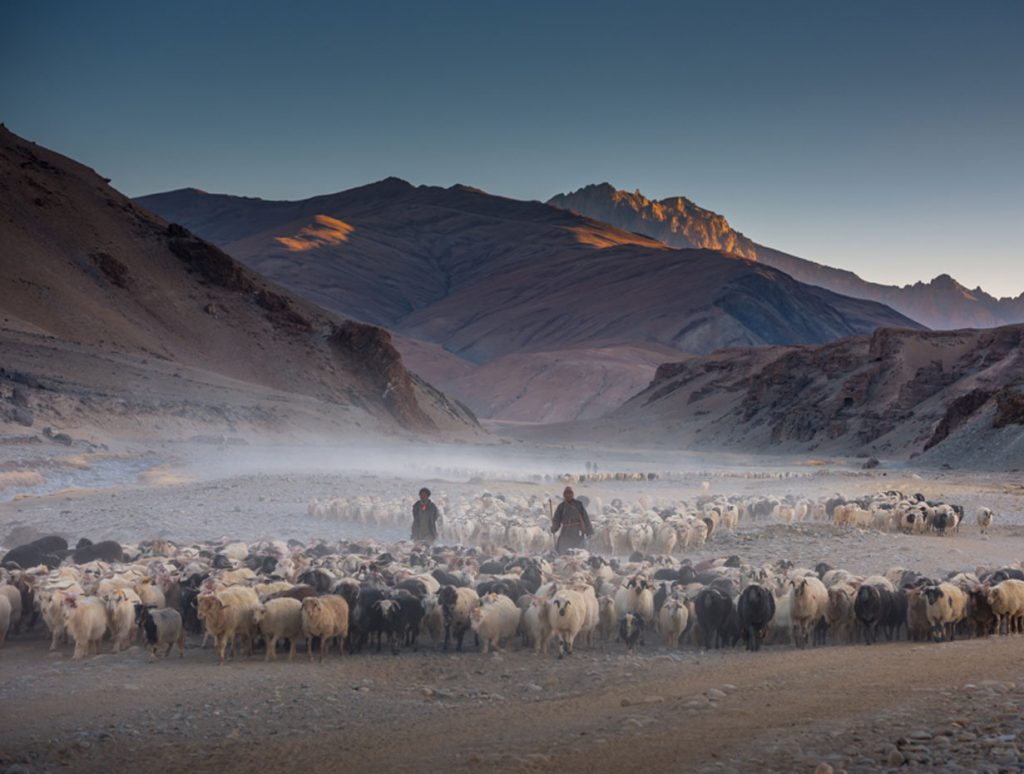
Native to the high-altitude regions of the Himalayas, Changthangi goats are the originators of the pashmina narrative. These goats have developed over millennia to withstand the bitter cold, and during the hard winter months, they produce a fine, downy undercoat to keep the elements out. The foundation of pashmina wool is its undercoat, which is renowned for having extraordinarily fine fibers. For decades, talented craftspeople in the Himalayan region have been crafting raw Cashmere wool into the opulent fabric that we are familiar with today. Production of pashminas is known to have originated in antiquity; documents from as early as the third century BC mention their use.
Believed widely that a saint made a pathway for Pashmina to Kashmir. On his journey to Kashmir, the saint stopped in Ladakh. Amazed by the type of goats at the foot of Changhthanghi Mountain because their wool was the softest and finest he had ever seen. For this reason, the goats are referred to as Changhthanghi Goats. He made a pair of socks out of the wool he had sorted through from the goat. To top it off, he called the wool, the Persian word pashm, which means "king of fibers" or "gold fiber," comes from it.
From 16th century onwards....
However, the Indian subcontinent's Mughal era (16th to 19th centuries) is when pashmina became widely appreciated and known. Pashmina became well-known as a high-end textile thanks to the support of Mughal emperors and nobles, who were renowned for their sponsorship of the arts. In the royal courts of India and Persia, pashmina shawls became extremely valuable and symbolic of riches, prestige, and refinement. Pathways for trade and cultural interchange have also shaped pashmina throughout history. Pashmina was one of the highly sought-after commodities exchanged along the Silk Road, which, for example, allowed the flow of goods and ideas between the East and the West. It became well-known in marketplaces throughout Central Asia, the Middle East, and Europe as a result of its unmatched softness and amiability.
While retaining its classic appeal, pashmina has continued to change and adapt in the 20th and 21st centuries in response to shifting fashion trends and tastes. Modern manufacturing techniques have been established to suit the increased demand for this beautiful fabric, even though traditional handcrafted pashminas remain highly regarded. Connoisseurs all over the world adore pashminas for their exceptional quality and stunning beauty, making them a symbol of elegance, craftsmanship, and legacy in modern times. Its lengthy history is proof of the amazing textile's continuing appeal, which never fails to awe people with its classic elegance.
Procuring the Finest Cashmere
The meticulous and time-consuming process of extracting superior Cashmere wool from Ladakh is a representation of the peaceful coexistence of environment and people. The first phase in the process produces the extraordinarily soft and warm undercoat known as cashmere: the Changthangi goat, a rare breed native to the area. The goats in question have successfully acclimated to the harsh winter weather in Ladakh, where temperatures frequently drop well below freezing. As winter approaches, the goats' heavy, insulating fur sheds on its own, allowing them to stay warm enough indoors.
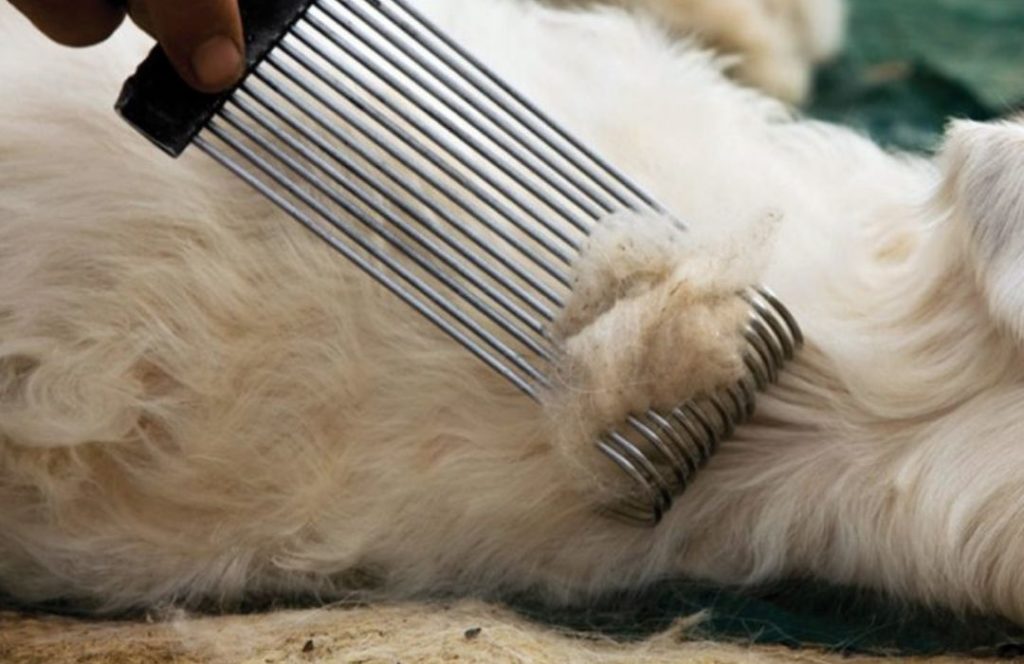
Local herders meticulously comb the goats during this moulting season in order to delicately retrieve the precious Cashmere fibers that cling to their underbellies. Our meticulous harvesting process not only produces the highest-quality wool but also ensures the goats' comfort and well-being. After being collected, the softest and finest Cashmere fibers are carefully hand-sorted to remove any coarse hairs or contaminants. This exacting attention to detail and regard for the environment ensures that every strand of Cashmere will retain its luxurious qualities, from its unparalleled softness to its incredible warmth. Purchasing fine Cashmere wool in Ladakh symbolizes the lifelong bond that exists between people, wildlife, and their ancestral homeland.
Cleaning the procured Cashmere
Ladakhi Cashmere , profusely cleaned and sorted in Kashmir according to a time-honoured method to provide the highest quality fibers for Pashmina weaving. The priceless Cashmere wool thus carefully cleaned to remove any impurities or debris may have accumulated during combing after itremoved from the Changthangi goats in the Ladakh region. Skilled artisans handwash the wool with care, using a mild soap and water solution to preserve its purity and softness.
The Cashmere fibers thus carefully screened after cleaning in order to separate the finer hairs from the coarser ones. Usually done by hand, with skilled artisans closely examining each strand, this sorting process ensures only the softest and highest-quality fibers thus selected for further processing. The separation of the fibers into yarn is an essential step in creating luxurious Pashmina fabrics. The exceptional quality and reputation of Kashmiri Pashmina art must be preserved. And thus calls for a dedication to exactitude and care in the cleaning and categorization processes.
Spinning of Cashmere wool
Patience and skill, required for the age-old craft of hand-spinning beautiful Cashmere wool. Once the fragile Cashmere strands have been meticulously cleaned and sorted, ready for hand spinning, the method used to transform them into yarn. This delicate work, handled with sensitivity and accuracy by skilled crafters, often women who have inherited the trade from previous generations. By skillfully winding the fibers into uniformly thin strands with a simple spinning wheel or spindle, they ensure strength and uniformity in the final yarn.
Because hand spinning allows artists to manage the tension and thickness of the yarn, the results are consistently excellent products. Using this age-old technique, Cashmere fibers retain their natural loft and softness while also giving each strand a unique personality that highlights the unique skill of the spinner. Though technically difficult, hand spinning respects age-old traditions and produces elegant, timeless creations. It also signifies a stronger connection to the history and customs of the nations that produce the prized Cashmere wool.
Hand-weaving of Fine Cashmere Fibres
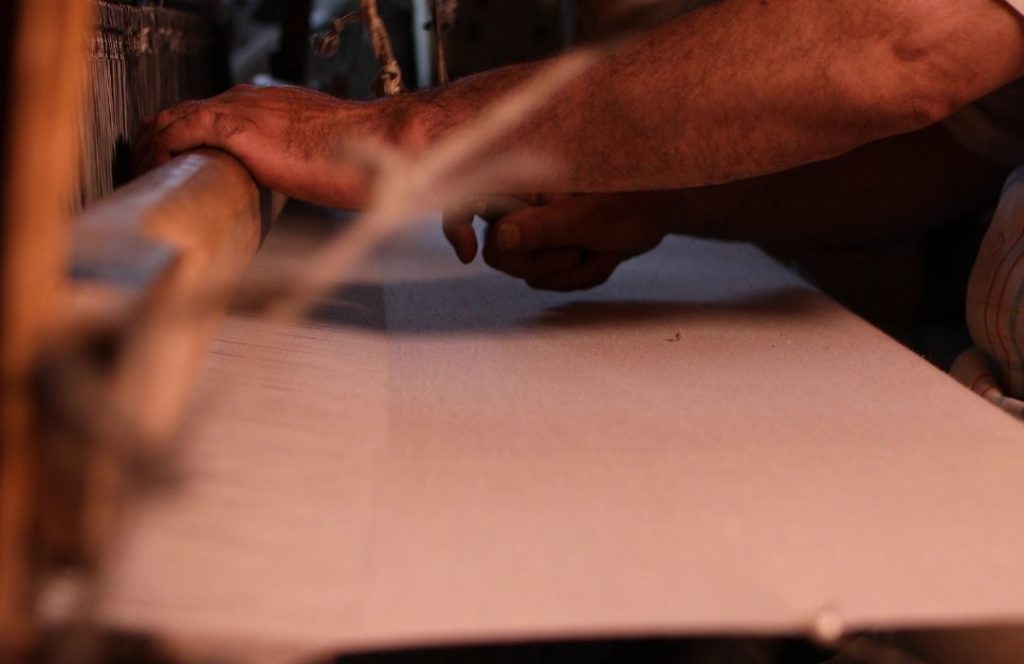
The region's rich cultural tradition and artisanal talent thus demonstrated by the ability to handweave Cashmere wool on Kashmiri handlooms. Expert weavers, sometimes working in cooperatives or tiny family firms, meticulously and painstakingly weave each item. These craftspeople use old wooden handlooms to skillfully interlace the fine Cashmere strands to create intricate patterns and designs. Both technical expertise and artistic ability are needed for this approach.
The handloom weaving technique creates exquisite fabrics of unparalleled quality while still maintaining the natural warmth and softness of. Every piece, which includes lavish scarves and shawls as well as intricately patterned wraps and stoles, is an expression of the weavers' talent and dedication. In Kashmir, handloom weaving is not only beautiful to look at but also vital to the survival of regional economies and traditional customs. Because it promotes ethical manufacturing practices and artisanal craft organizations, cashmere wool handloom weaving flourishes as a symbol of ageless elegance and sustainable luxury.
Designing in Pashmina
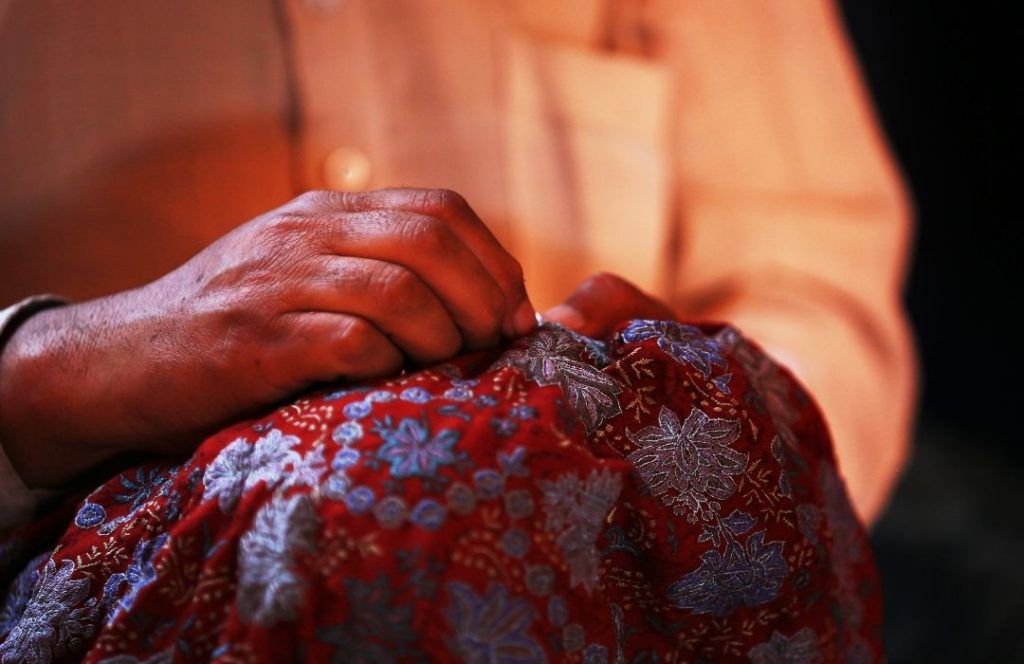
Pashmina design finds a delicate balance between honouring tradition. Thus, welcoming innovation at the confluence of centuries-old motifs and contemporary aesthetics. Because of Kashmir's rich cultural heritage, talented designers incorporate geometric designs, floral motifs, and stunning paisley patterns into their creations. The artisanal legacy of Pashmina weaving preserved by the regular transmission of these traditional patterns from one generation to the next. Designers painstakingly adapt vintage motifs to suit contemporary tastes.Thus, to create new interpretations that appeal to today's discerning consumers. They play with scale, placement, and colour schemes.
By experimenting with new techniques in addition to classic themes, designers want to push the boundaries of Pashmina design. The adaptability of pashmina wool allows for countless design options, from classic pieces to cutting-edge experimental pieces. Whether it's by experimenting with new weaving techniques. All testing out dyeing techniques, or adding contemporary elements like digital printing, designers are constantly pushing the boundaries. Thus, redefining the possibilities of Pashmina workmanship.
Evolution of Pashmina Designing
The evolution of Pashmina design depends on partnerships between designers and artisans. All because they foster creative exchange and mutual appreciation for one another's abilities. These partnerships help designers better appreciate the exquisite craftsmanship of Pashmina weaving while exposing artisans to new concepts and styles. Together, they produce amazing products that combine tradition and innovation in a way. Thus ensuring Pashmina art will endure into the modern day.
Contemporary Styles in Pashmina
The pashmina has elegantly changed with the times, adopting current styles without sacrificing its innate refinement and richness. Sleek lines and subdued colour schemes define the "Facile Finesse" trend, which is a popular modern look. Pashmina shawls and scarves in blush, taupe, and other soft, neutral tones are popular because they easily dress up any outfit, from weekend wear to professionally fitted workplace attire. These items frequently have delicate decorations like fringe or metallic accents, which give modern wardrobes a hint of subtle glitz.
The "Dilettantish Fusion" aesthetic is another prominent modern style that honours the blending of textures, patterns, and cultures. The vibrant colours and exotic prints of pashmina accessories, including paisley, tribal themes, or geometric designs, convey a global-inspired sensibility that embodies the attitude of the modern wanderer. These pieces are adaptable fashion statements that go from day to night with ease and add a spirit of exploration and adventure to ensembles. Pashmina accessories in bold colours and unique motifs give a dynamic edge to modern clothing. Whether worn as a statement scarf over the shoulders or as a belt inspired by bohemian style around the waist.
Eco-Friendly and Ethical Approach
The desire for eco-friendly and ethically sourced fashion has increased due to the "Modern Sustainable " movement, and pashmina is no exception. With a focus on handmade craftsmanship and natural materials. Thus, ethical production processes and sustainability are given priority in contemporary pashmina fashions. Conscientious shoppers looking to make eco-friendly fashion choices thus drawn to pashmina scarves and wraps. Made from wool ethically produced and colored with eco-friendly pigments. These items are a responsible choice for the contemporary. All socially conscious customer since they represent a dedication to sustainability in addition to their timeless appeal.
High-end Modern Fashion
With a variety of styles to suit a wide range of tastes and preferences, the pashmina continues to captivate modern fashion thanks to its exquisite appeal and versatility.
- Bohemian Vibe: This fashion trend gives pashmina a free-spirited, artistic flair by taking inspiration from a variety of eclectic foreign influences. The bohemian aesthetic is personified by pashmina ponchos, wraps, and giant scarves embellished with vivid colours, detailed embroidery, and fringe accents. These pieces lend a whimsical and unique touch to outfits with a boho vibe.
- Fusion of Newness: Modern fusion styles provide a novel and inventive spin on pashmina wear by fusing traditional craftsmanship with cutting-edge design components. The classic pashmina combined with contemporary fabrics, embellishments, and cuts in these designs. Thus, frequently feature unexpected juxtapositions of textures, prints, and silhouettes to create statement pieces. Thus, speaking to the eclectic and dynamic preferences of today's fashion-forward people.
- Contemporary Minimalism: With its emphasis on simple shapes and subtle beauty, contemporary minimalism reimagines pashmina in chic and fashionable styles. The understated textures, muted colours, and understated yet elegant designs of minimalist pashmina scarves and shawls make them adaptable accessories that subtly enhance any ensemble, whether it be professional or casual.
A classic and adored accessory in the always-changing world of fashion, the pashmina never fails to reinvent itself, whether it is embracing the free-spirited charm of bohemian chic, the inventive spirit of contemporary fusion, or the simplicity of modern minimalism.
Contemporary Pashmina Shawl
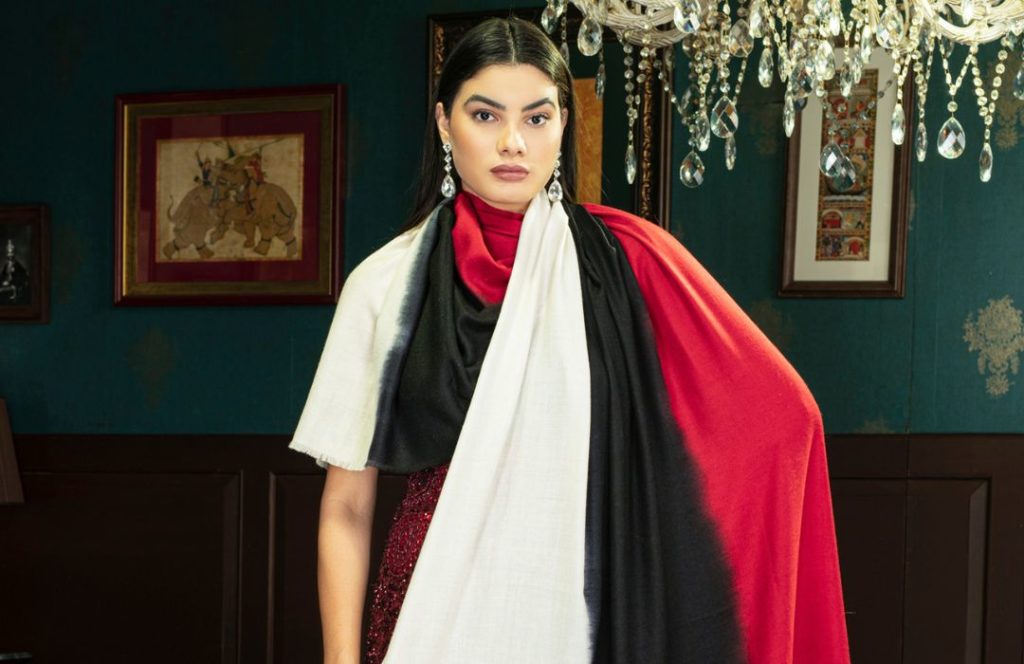
Modern fashion needs have shaped the evolution of contemporary pashmina shawls, which combine classic elegance with cutting-edge design aspects. The focus on adaptability is one common tendency in modern pashmina shawls. Versatile shawls used in a variety of ways presented by designers. They can be worn as a sophisticated beach cover-up, twisted into a stunning infinity scarf, or thrown over the shoulders as a classic wrap. This adaptability speaks to the demand of contemporary consumers for items that can easily shift from day to night and fit various occasions.
Bold colours and eye-catching designs are two more noteworthy features of modern pashmina shawls. While current designs embrace vivid colours and eye-catching graphics that give this classic accessory a contemporary touch, traditional pashmina shawls frequently include classic themes and subtle tones. Modern pashmina shawls come in a variety of patterns, including geometric, floral, and abstract styles. They enhance any ensemble with their unique style and individuality. Trend-setters who want to maintain the opulent legacy of pashmina while making a bold fashion statement are drawn to these striking shawls.
Modern pashmina shawls place equal emphasis on sustainability and quality as well as style. These days, a lot of designers use eco-friendly production techniques and responsibly sourced pashmina wool to make shawls that are not only opulent but also environmentally responsible. The fashion industry thus witnessing a growing trend towards conscious consumerism, reflected in the need for ethically manufactured. Contemporary pashmina shawls provide a window into the future of luxury fashion, where ethics, style, and workmanship come together to produce genuinely remarkable pieces, by fusing timelessly elegant design with cutting-edge innovation and sustainable materials.
Contemporary Cashmere Scarf
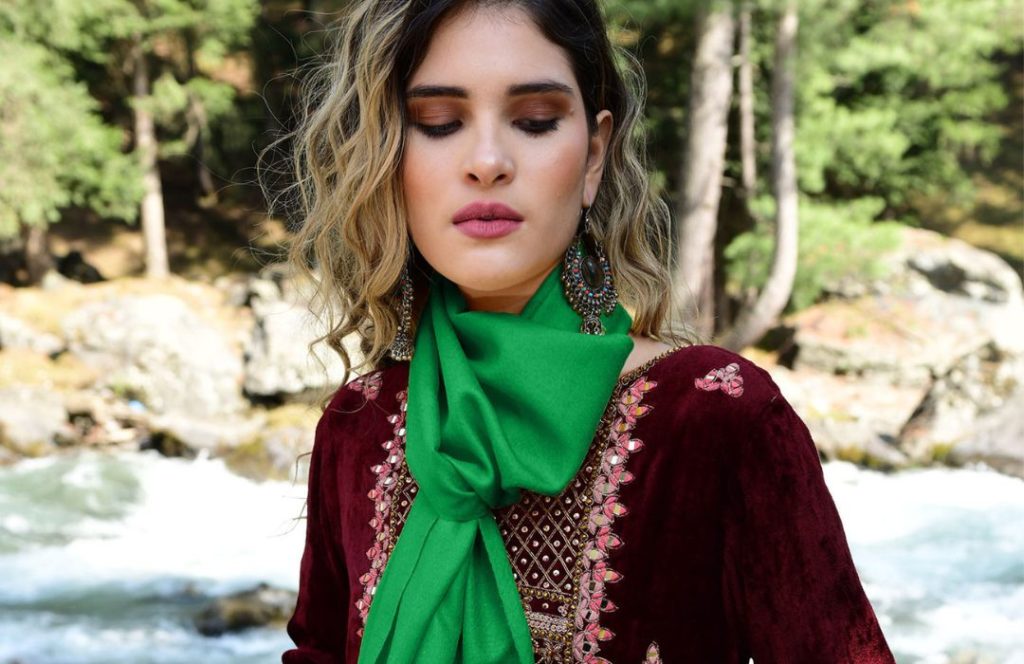
Modern design sensibilities combine with ancient craftsmanship to create the ultimate in luxury and sophistication in cashmere scarves. Focusing on simple elegance is a popular trend in modern cashmere scarves. Simple patterns, neutral colour schemes, and clear lines are preferable by designers to produce subtle elegance in their scarves. These adaptable accessories are essential pieces in the current wardrobe because they add a stylish touch to everything, from streetwear to formal events. The softest cashmere fibers, used to create these scarves, provide unmatched warmth and softness for maximum comfort and style.
Modern cashmere scarves are noteworthy for their adaptability as well. With the help of cutting-edge features like convertible styles, detachable decorations, and reversible designs, wearers may now tailor their look to match their mood and attire. Modern cashmere scarves offer an infinite array of styling options. Whether worn tightened at the waist as a stylish belt, draped over the shoulders as a shawl, or wrapped around the neck as a comforting scarf. This versatility satisfies the need of contemporary consumers for multipurpose products all easily shift from day to night and fit into many settings.
Ethical Crafting
Modern cashmere scarves embrace ethical and sustainable production methods in addition to elegance and adaptability. In order to reduce their influence on the environment, several designers now acquire their cashmere from herds all socially and ecologically managed. Representing an increasing trend in the industry towards sustainable design, these ethically made scarves appeal to ethical shoppers who appreciate transparency and ethical responsibility in their attire selections. Modern cashmere scarves are the epitome of refined elegance. Thus, offering discriminating customers a timeless accessory that captures both style and conscience. They do this by fusing timeless luxury with current innovation and sustainability.
Also read: 8 Special Cashmere wraps to elevate Mom’s Wardrobe
Contemporary Cashmere Wrap
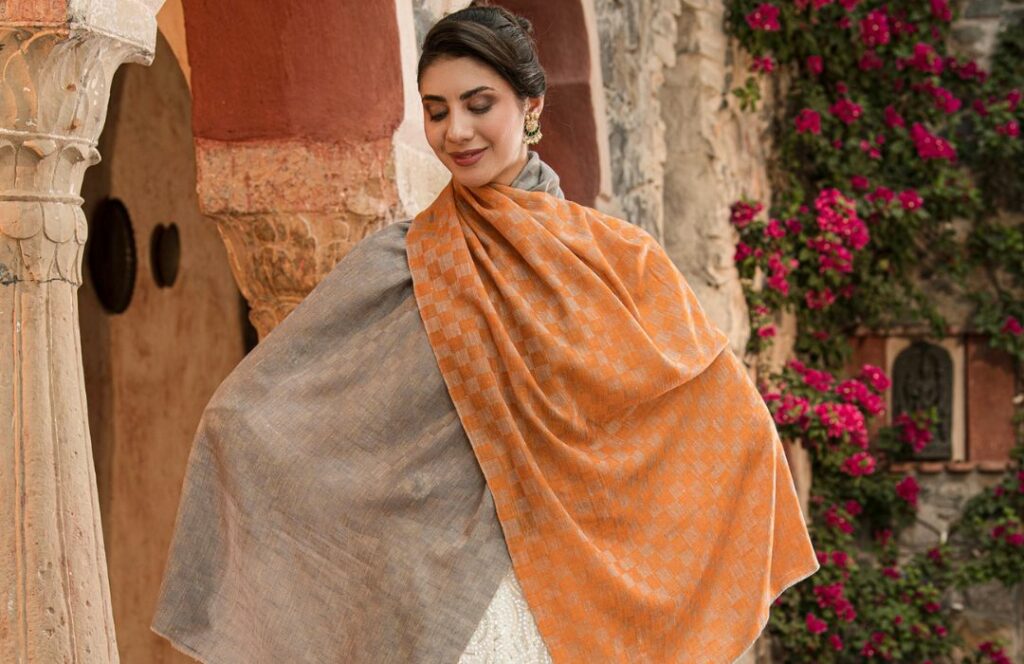
Modern cashmere wraps provide a fresh take on an enduring classic, embodying elegance and adaptability. Cashmere wraps, with their unmatched softness and carefree grace, have become essential accessories in today's fashion scene. A popular style in modern cashmere wraps is emphasizing big silhouettes and loose drapes. In order to create wraps that envelop the body in sumptuous warmth and emanate a relaxed sophistication, designers go toward wide dimensions and flowing lines. Whether layered over fitted separates or casually thrown over evening attire. All these enormous wraps are the preferred choice of style-forward people who want to make a statement with their accessories.
Modern cashmere wraps are extremely versatile, which is another noteworthy feature. These luxurious cashmere wraps, highly valued for their insulating qualities and lightweight design, makes them perfect for travel and changing seasons. Reversible wraps with striking hues or patterns are popular among designers. Thus, enabling wearers to easily change their appearance to match their attire or mood. Modern cashmere wraps also frequently have adjustable style elements like belt detachables, button closures, and fringe trim. Thus, providing countless ways to customize and personalize the garment. Its adaptability to different situations and smooth transition from day to night appeals to the modern consumer's need.
Sustainability in Pashmina
Modern cashmere values sustainability and moral production methods in addition to style and adaptability. Many designers today acquire cashmere from ethically managed herds and use eco-friendly production techniques. Thus, reducing environmental effects, as social responsibility and environmental issues get more and more attention. Reflecting an increasing trend in the industry towards sustainable design. These ethically made wraps appeal to ethically conscious consumers who appreciate transparency and ethical responsibility in their fashion choices. Modern cashmere wraps and Scarves provide discriminating customers with a chic accessory. Thus, epitomizes conscience and style by fusing time-honoured elegance with cutting-edge innovation and sustainability.
Also read: Is Pashmina Ethical?